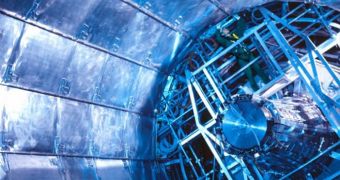Yesterday morning, a new phase in the Large Hadron Collider (LHC) science program began. For the first time ever, streams of protons have been collided head-on against each other at an energy level no lower than 7 teraelectronvolts (TeV), about three times higher than previously-attained energies. This is basically the beginning of studies that will separate the science produced at this particle accelerator from that of any other facility of the same time. The army of physicists operating this machine has been anticipating this exact moment for at least a decade, Wired reports.
Early on March 31, the first protons began smashing against each other in the 24-kilometer-long tunnels of the LHC. “It’s a great day to be a particle physicist. A lot of people have waited a long time for this moment, but their patience and dedication is starting to pay dividends,” said in a press statement on Tuesday the director general of the European Organization for Nuclear Research (CERN), Rolf Heuer. The accelerator is operated and managed by this agency. It features three primary particle detectors, which are sensitive enough to make out even the most short-lived and heavy elementary particles, such as the Higgs boson.
“With these record-shattering collision energies, the LHC experiments are propelled into a vast region to explore. The hunt begins for dark matter, new forces, new dimensions and the Higgs boson,” added Fabiola Gianotti, a physicist with, and a spokesperson for, the ATLAS experiment, one of the three detectors. Getting to this point was no easy task, considering the year of delays the LHC had to undergo, until engineers could fix the glitch that stopped it back in September 2008. Even when the machine was turned back on in late 2009, the world did not full sigh in relief. It is only now, when it's operating at a 3.5 TeV energy level per beam, that the scientific community can express its joy.
These energy levels will be maintained for a full year and a half, until the accelerator is shut down at the end of 2011 or at the beginning of 2012. It will then spend the next year in preparations and upgrades, as engineers will get it ready for a 2013 reopening date. Once this happens, energy levels will be brought to 7 TeV per beam, bringing the LHC to its maximum-planned total energy level of 14 TeV total. While this is taking place, researchers will also need to pay special attention to the vast amounts of data that will be produced by the high-energy collisions.

 14 DAY TRIAL //
14 DAY TRIAL //